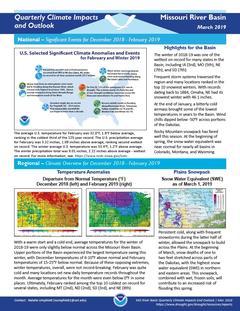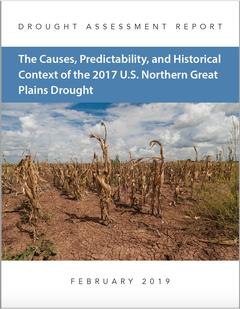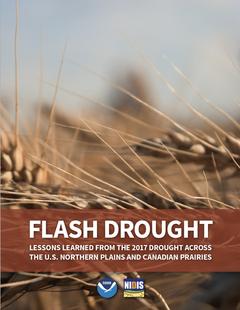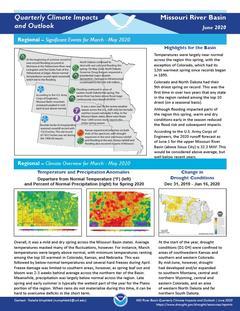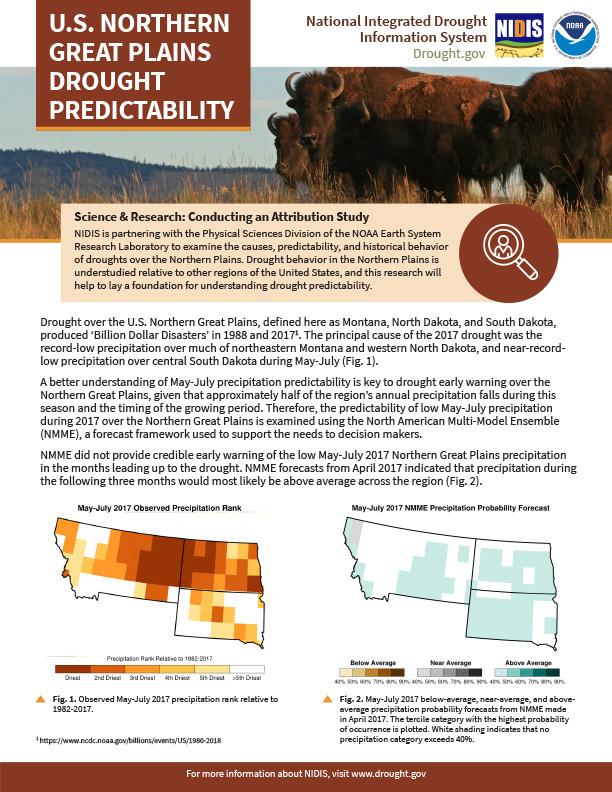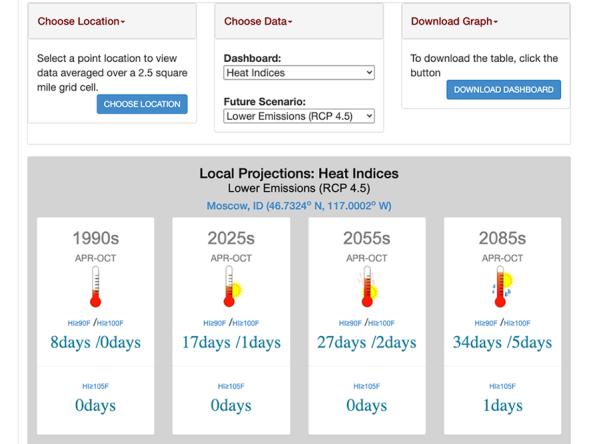Quarterly Climate Impacts and Outlook for the Missouri River Basin December 2018 – February 2019. Dated March 2019.
With a warm start and a cold end, average temperatures for the winter were only slightly below normal across the Missouri River Basin. Persistent cold, along with frequent snowstorms during the latter half of winter, allowed the snowpack to build across the Plains.
This assessment is a National Oceanic and Atmospheric Administration (NOAA) response to a request by the National Integrated Drought Information System (NIDIS) for an evaluation of the causes, predictability, and historical context of the 2017 United States Northern Great Plains drought. This assessment was led by a team of weather and climate experts from NOAA’s Earth System Research Laboratory’s Physical Sciences Division and its Cooperative Institute located at the University of Colorado Boulder.
The 2017 drought was a rapid-onset event for northeast Montana, the Dakotas, and the Canadian Prairies during the spring and summer of 2017. It was the worst drought to impact the U.S. Northern Plains in decades and it decimated crops across the region, resulting in $2.6 billion in agricultural losses in the U.S. alone, not including additional losses in Canada. The unique circumstances of this drought created an opportunity to evaluate and improve the efficacy of drought-related coordination, communication, and management within the region in preparation for future droughts.
Quarterly Climate Impacts and Outlook for the Missouri River Basin March – May 2020. Dated June 2020.
Temperatures were largely near normal across the region this spring, with the exception of Colorado, which had its 12th warmest spring since records began in 1895. Although flooding impacted parts of the region this spring, warm and dry conditions early in the season reduced the flood risk and subsequent impacts.
Drought over the U.S. Northern Great Plains, defined here as Montana, North Dakota, and South Dakota, produced ‘Billion Dollar Disasters’ in 1988 and 2017. The principal cause of the 2017 drought was the record-low precipitation over much of northeastern Montana and western North Dakota, and near-record-low precipitation over central South Dakota during May-July.


